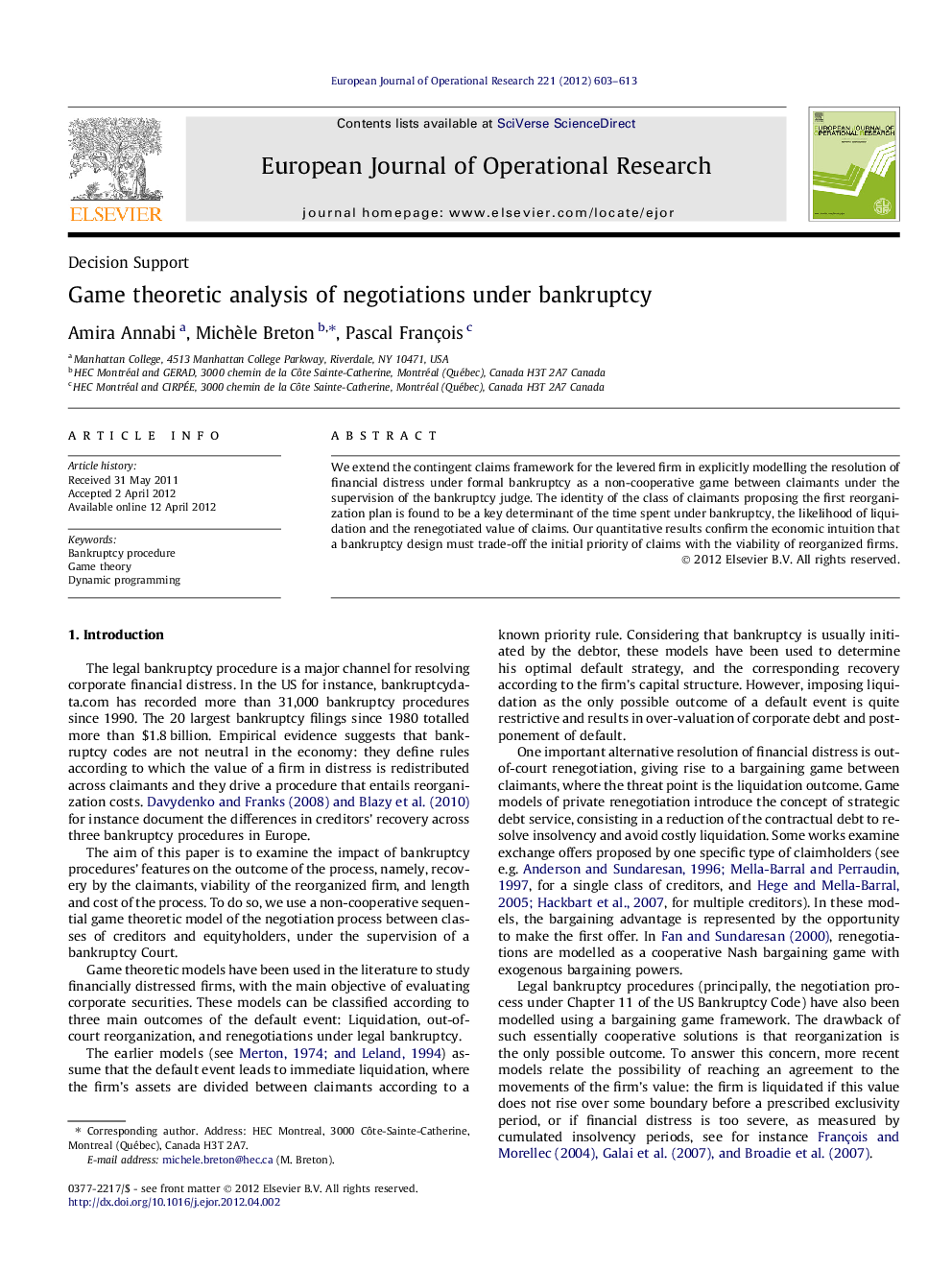| کد مقاله | کد نشریه | سال انتشار | مقاله انگلیسی | نسخه تمام متن |
|---|---|---|---|---|
| 480069 | 1446072 | 2012 | 11 صفحه PDF | دانلود رایگان |

We extend the contingent claims framework for the levered firm in explicitly modelling the resolution of financial distress under formal bankruptcy as a non-cooperative game between claimants under the supervision of the bankruptcy judge. The identity of the class of claimants proposing the first reorganization plan is found to be a key determinant of the time spent under bankruptcy, the likelihood of liquidation and the renegotiated value of claims. Our quantitative results confirm the economic intuition that a bankruptcy design must trade-off the initial priority of claims with the viability of reorganized firms.
► We model the resolution of financial distress as a non-cooperative dynamic game.
► Claimants negotiate under the supervision of the bankruptcy judge in successive rounds.
► We find that the outcome depends on the sequence of players proposing a reorganization plan.
► We find that bankruptcy designs trade-off the priority of claims with the viability of firms.
Journal: European Journal of Operational Research - Volume 221, Issue 3, 16 September 2012, Pages 603–613